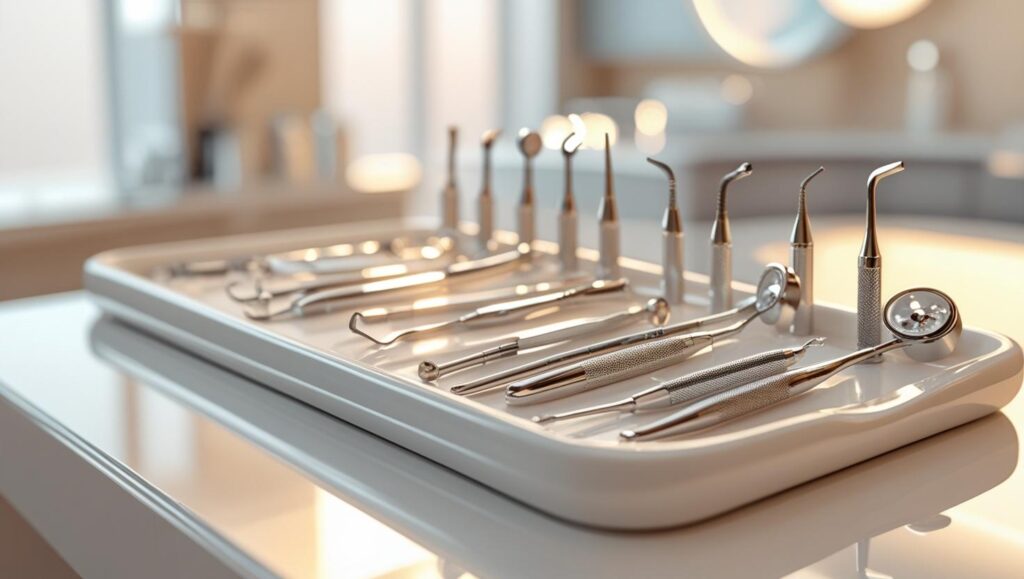
Biological and Holistic Dentistry
1. Introduction to Holistic Dentistry
Definition and Philosophy
Biological (or holistic) dentistry is an approach that considers the impact of dental treatments on the entire body. It emphasizes:
- Biocompatibility – Using non-toxic materials.
- Prevention – Addressing root causes of disease.
- Minimally Invasive Techniques – Preserving natural tooth structure.
- Whole-Body Health – Recognizing oral-systemic links (e.g., gum disease and heart disease).
History and Evolution
- Ancient Practices: Early civilizations used herbs, acupuncture, and metal-free fillings.
- 1800s: Amalgam fillings (mercury-based) became popular despite toxicity concerns.
- Early 1900s: Weston A. Price linked nutrition to dental health.
- 1970s-Present: Holistic dentistry grew with concerns over mercury, root canals, and fluoride.
Differences from Conventional Dentistry
| Aspect | Conventional Dentistry | Holistic Dentistry |
|---|---|---|
| Fillings | Amalgam (mercury) | Composite, ceramic, glass ionomer |
| Root Canals | Standard procedure | May recommend extraction + alternatives |
| Extractions | Immediate implants/dentures | Focus on bone preservation (PRF, ozone) |
| Diagnostics | X-rays, visual exams | Cavitat scans, thermography, biocompatibility testing |
2. Core Principles of Biological Dentistry
Whole-Body Health Connection
- Oral infections (cavities, gum disease) can contribute to systemic issues (diabetes, Alzheimer’s, heart disease).
- Focal Infection Theory: Chronic dental infections may spread bacteria to other organs.
Biocompatible Materials
- Avoid: Mercury, nickel, BPA-lined composites.
- Prefer: Zirconia, ceramic, hydroxyapatite.
Minimally Invasive Techniques
- Air Abrasion (instead of drills).
- Laser Dentistry (for cavities and gum treatment).
Preventive & Nutritional Focus
- Diet rich in fat-soluble vitamins (A, D, K2).
- Oil pulling, herbal mouthwashes.
3. Diagnostic Approaches in Holistic Dentistry
Beyond X-Rays
- Cavitat Ultrasound: Detects cavitations (hidden jaw infections).
- Electrodermal Screening: Tests biocompatibility of materials.
- Salivary Testing: Checks for pathogenic bacteria.
4. Holistic Approaches to Common Procedures
Mercury-Safe Amalgam Removal
- IAOMT Protocol:
- Rubber dam isolation.
- High-volume suction.
- Oxygen mask for patient.
- Chlorella/charcoal detox post-removal.
Biocompatible Fillings
- Composite Resin (BPA-free).
- Glass Ionomer (releases fluoride naturally).
- Ceramic Inlays/Onlays.
Root Canal Alternatives
- Ozone Therapy: Kills bacteria without removing the tooth.
- Extraction + PRF: If infection is severe, use platelet-rich fibrin for healing.
Biological Extractions
- Avoid leaving infected tissue.
- Socket Preservation with PRF or bone grafts.
Holistic Orthodontics
- ALF (Advanced Lightwire Functionals): Gentle expansion.
- Myofunctional Therapy: Corrects tongue posture.
5. Advanced Holistic Techniques
Ozone Therapy
- Gas or ozonated water for disinfecting cavities and gums.
Low-Level Laser Therapy (LLLT)
- Reduces inflammation, accelerates healing.
PRF (Platelet-Rich Fibrin)
- Enhances bone and soft tissue regeneration.
6. Nutrition and Oral-Systemic Health
- Weston A. Price’s Findings: Indigenous groups had perfect teeth on traditional diets.
- Key Nutrients:
- Vitamin D3 + K2: Guides calcium into bones, not arteries.
- Magnesium: Prevents grinding (bruxism).
7. Controversies and Criticisms
- Mercury Fillings: ADA claims they’re safe; holistic dentists disagree.
- Root Canal Debate: Some believe all root canals harbor infection.
8. Future of Holistic Dentistry
- AI Diagnostics: Early cavity detection.
- Bioengineered Teeth: Stem cell-grown replacements.
9. Conclusion
Holistic dentistry bridges oral and systemic health, combining ancient wisdom with modern technology. By prioritizing biocompatibility, prevention, and minimally invasive methods, it offers a sustainable approach to lifelong dental wellness.
